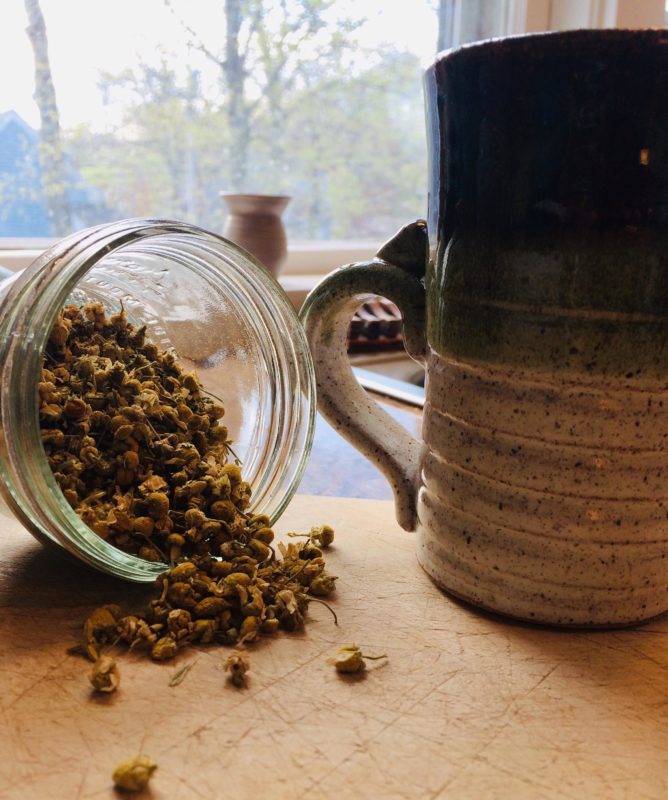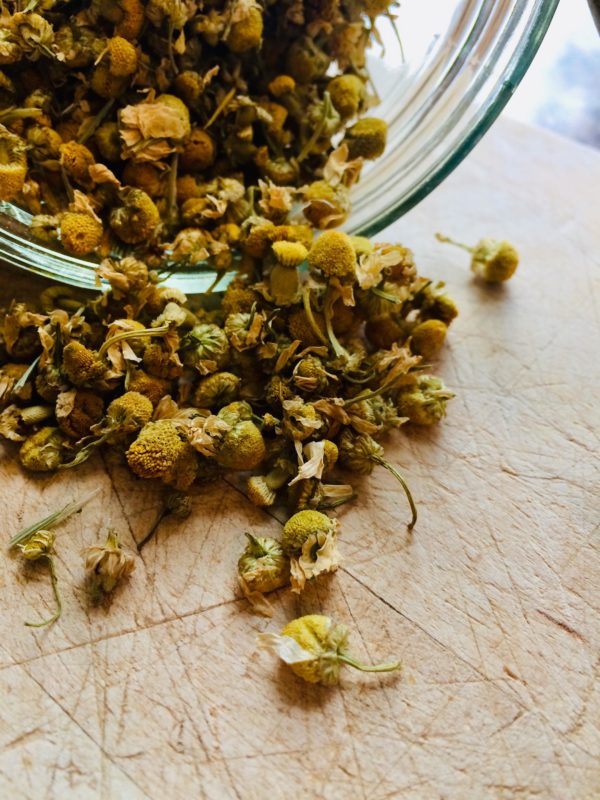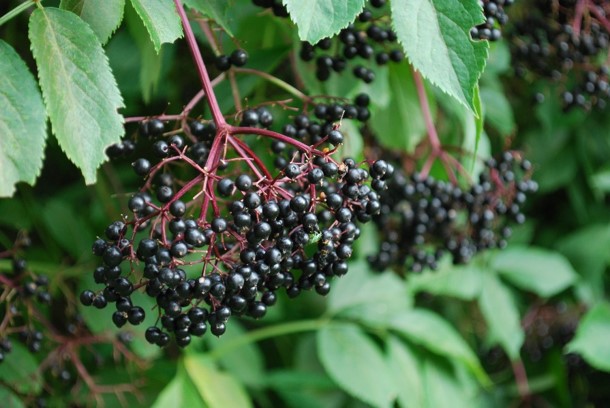I think we can all agree that we’re not living in the easiest of times. Luckily—as I tell my herbal clients and students—there’s an herb for that.
 Today, let’s take a look at herbs to soothe the nervous system (like lemon balm and chamomile) and herbs to help us adapt to stress, making anxiety (hopefully) the last reaction, rather than the first. These are called adaptogens and include herbs like holy basil and ashwagandha.
Today, let’s take a look at herbs to soothe the nervous system (like lemon balm and chamomile) and herbs to help us adapt to stress, making anxiety (hopefully) the last reaction, rather than the first. These are called adaptogens and include herbs like holy basil and ashwagandha.
While these herbs help our bodies deal with stress and anxiety on a moment-to-moment basis (especially if coupled with a restorative walk outdoors or 20 minutes of meditation or yoga), they also help protect, heal, and defend the body from the ravages of stress and anxiety.
Lemon Balm (Melissa officinalis)
If you’re anything like me, anxiety tends to settle right in your stomach. I either find myself unable to eat or eating emotionally. But whatever the case, it’s hard to digest anything when your stomach’s riddled in knots.
If this sounds familiar, then lemon balm is your answer. It calms the nervous system, soothes digestion, and lowers blood pressure. It’s easy—and palatable—to take as a tea or a tincture and it works quickly. For tea or tincture, drink a cup or take ten drops, respectively, as needed. Lemon balm is crazy-safe, so no worries about using it as often as you’d like.
Lemon balm—a member of the mint family (as so many herbs are)—makes a lovely, uplifting, energizing tea. Sweeten it to your liking, but avoid using dairy milk in medicinal brews (the proteins interact with active constituent uptake).
Chamomile (Matricaria recutita):
So, we’re all probably familiar with chamomile—aside from black tea, it’s the best-selling tea in the world. But as an herb for calming the nervous system, chamomile is a definite go-to.
Because of the potent aromatherapy factor, chamomile works best as a tea (as opposed to a tincture); since it’s so easy to find, it’s also super accessible. Depending on how long you brew your tea, chamomile can either be used to help you digest a meal (it becomes quite bitter if steeped longer than five minutes, and bitters are great for digestion) or to calm your nerves (2-3 minutes, tops). I often use it both ways.

Personally, I prefer loose-leaf herbs for all of my preparations—that way I can control the quality, strength, and source of my brew. However, absolutely feel free to use the traditional teabag, too. If you’re loose-leafing it, use one teaspoon of herb per cup of water and steep (covered!) for three minutes. Doctor with a natural sweetener, lemon, and/or non-dairy milk if you prefer. Be sure to inhale that aromatherapeutic steam, keeping in mind your intention to calm body and mind as you drink.
If you’re using your brew for digestion, steep for 5-10 minutes, don’t sweeten, and drink 20 minutes before OR 30 minutes after a meal.
A note: if you have extreme ragweed allergies, go slowly with chamomile—it can, though rare, elicit an allergic reaction.
Holy Basil (Tulsi or Ocimum sanctum):
I am a huge, huge, massive fan of holy basil (or Tulsi, as it’s often called). As an adaptogen, it eases the body’s response to stress.
Adaptogens work by helping to shield and protect the nerves. When we’re stressed or tense for long periods of our lives, our nerves become sensitive, careworn, and sparky. In other words, it doesn’t take much to frazzle us. But enter holy basil, and it’s like the nerves get coated in a warm, mossy, über-protective coating that shields us from stress.
For tea, steep (covered) for 10 minutes. I love, love the flavor of holy basil, especially when sweetened with a bit of stevia or honey along with a splash of non-dairy milk. Inhale the steam as you drink for bonus aromatherapy action. You can drink this throughout the day.
For tincture, try 10 drops 3x/day. If that isn’t doing it for you after a week, then keep bumping up your dose. You can go as high as 60 drops at a time. Just keep charting your progress, keeping track of dosage times, amounts, and responses.
Holy basil is generally safe, but a few precautions, just for the record: Avoid if you’re pregnant, nursing, or are considering becoming pregnant (holy basil might have an anti-fertility effect—it’s not permanent; it just exists while you take the herb). Holy basil isn’t really for children, and avoid it if you’re hypoglycemic or taking blood thinners.
Ashwagandha (Withania somnifera):
Ashwagandha is an Ayurvedic remedy (part of India’s 3,000-year-old practice of using herbs medicinally) and has incredible anti-stress properties. (Although, if you’re pregnant, avoid ashwagandha and substitute chamomile or lemon balm).
Ashwagandha is in that same adaptogen category as holy basil; it soothes the nerves, lowers cortisol levels (aka the “stress hormone”), and its antioxidant properties help protect the body from the effects of stress.
Ashwagandha makes a lovely early-evening beverage. Warm a cup of milk (dairy or non-dairy is fine in this case) and whisk in a teaspoon of ashwagandha powder (our local Avena Botanicals makes a marvelous one). Add honey or maple syrup and sip. (Just a note: personally, I find that ashwagandha is too stimulating right before bed, but most people find the opposite true. As always, experiment and find what works for you.)
You can also try tinctures or capsules. For capsules: 600 to 1000 mg per day. For tincture, try 10 drops 3x/day. Up that if you need to, but track your progress for a few weeks before increasing your dose, keeping in mind that herbs take time to work.
As with any new routine, stay present and take notes. Not every herb works for everybody. But aside from any contraindications I’ve mentioned, these herbs are safe for experimentation. Be well, keep calm, and drink tea!
~Amy Holt, Writer/Editor

